The story must start somewhere. Before Sunday, May 26th, 1974, The Dubs didn’t exist. The football team in blue were Dublin, part hapless, part hopeless, running with the also-rans. The Dubs didn’t exist on the day after May 26th either, and not for weeks or months yet, but that was the year they won an All-Ireland that changed the GAA forever. That’s a different story.
In this origin story there is no Big Bang. On that day, when Dublin met Wexford in the opening round of the Leinster championship, it was a curtain-raiser for the league final replay between Kerry and Roscommon in Croke Park. Two planets separated by the breadth of football’s solar system.
The football was coarse and unvarnished. “It seemed to me,” said Tony Hanahoe once, “that we were the comedy sketch going on before the main event.” Hanahoe lined out at centre forward that day. Alan Larkin was the Dublin centre back. “The Wexford game created ridicule for the team,” Larkin says now. “And Wexford as well.” Every dud match is a collaborative work.
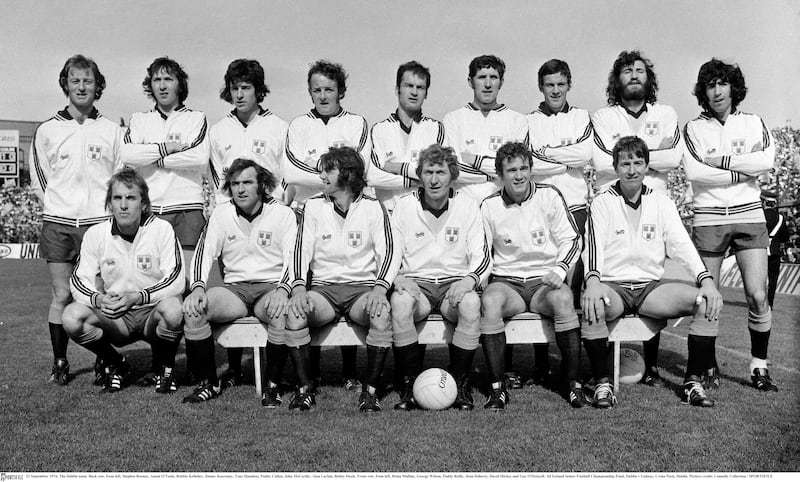
Nobody’s blushes were spared. According to the report in The Irish Times, “some of the scandalous attempts to land points“ generated “at least a couple of guffaws from the mainly Roscommon-Kerry crowd in the Hogan Stand”.
READ MORE
The Irish Independent said that if Dublin had “half the dash and drive of league champions Kerry they would have won this pipe-opener by a cricket score”. The Irish Press declared, without fear of contradiction, that Dublin “can be written off as serious contenders for Offaly’s provincial crown”.
Dublin had not won a Leinster title in nearly a decade. In the previous four seasons they had been eliminated by Louth, Kildare, Longford and Laois, none of whom won the title afterwards. Before a ball was kicked in the 1974 championship Dublin were quoted at 8/1 to win Leinster; after the Wexford game their odds drifted to 10/1.
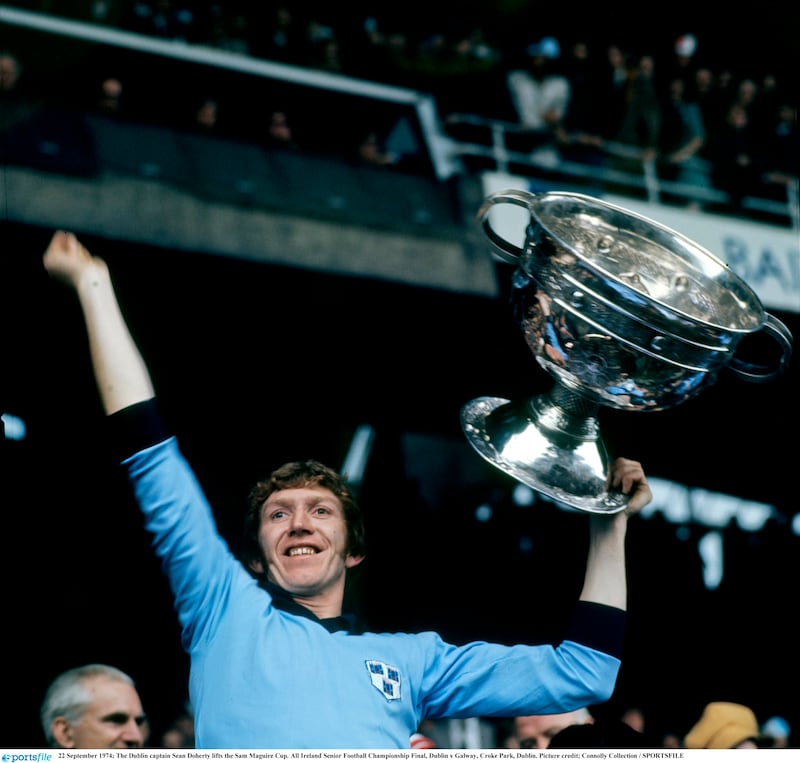
“I’d say you would have got 1,000/1 against Dublin being in the All-Ireland final,” Hanahoe says now, “let alone winning it.”
The bookies had them at 33s, a nominal number to describe the cold remoteness of their chance.
“There was nothing there,” says Paddy Cullen. “At the time we didn’t know where we were going. Even at that stage we were just delighted to get over that match and see what happens. But we were just ... we were nothing. We were going nowhere.”
How does something like this happen? By what design?
“A myth has developed that Kevin Heffernan came as a knight in shining armour in 1974,” wrote David Walsh in Return to the Hill, his epic retrospective on The Dubs in the January 1989 issue of Magill magazine.
The reality is that Heffernan had been around for years. Having captained Dublin to win the 1958 All-Ireland he was a selector when they won it again five years later. After that, he stayed involved for much of the 1960s and again between 1970 and 1972. In those days, the concept of a manager had not been embraced by GAA teams, or at least not in the modern definition of the role. Instead, selectors would be appointed by the county board by a variety of established practices, none of which paid much attention to aptitude. Heffernan was excluded in 1973. Pointedly.

“We played Kildare in Navan in 1972,” says Hanahoe. “Kevin was in charge, I was captain and we were quite confident of beating Kildare. It didn’t work out that way. There was a change of management in the Dublin county board whereby Heffernan was fired, I was fired and a lot of the players were fired. Fired is a hard word, but that’s effectively what it was.”
In 1973, however, there was another regime change. Jimmy Gray was elected chairman of the Dublin county board and he wanted Heffernan. He agreed to return on condition that he would be unburdened by a bloated committee of selectors and that he would have control. Two selectors were appointed, on Heffernan’s approval: Donal Colfer and Lorcan Redmond. Heffernan was manager in the common understanding of the word now.
After Dublin lost to Louth in the 1973 championship Cullen remembers Heffernan coming into the Dublin dressingroom and standing up on a wooden bench, as if this was a campaign husting. “He said he was going to get a team that was going to win.”
Who believed him?
“I would have had a few comments from my own clubmates in Raheny, whether it was worth my while playing with Dublin because they were never going to win anything,” says Larkin. “There would have been a few lads who had a similar experience with other people. Kevin [Heffernan] would have trawled through a lot of players and there would have been other lads who were asked to come in but they declined because they didn’t see any purpose in it. They didn’t think we were going to win anything or do anything.”
Heffernan’s plan was based on fitness and speed and moving the ball with lightning efficiency; all of those components were interdependent. Mickey Whelan, the former Dublin player, was his friend and clubmate and around that time he was studying sports science at a college in New York. He asked Whelan to devise training programmes that were innovative and gruelling.
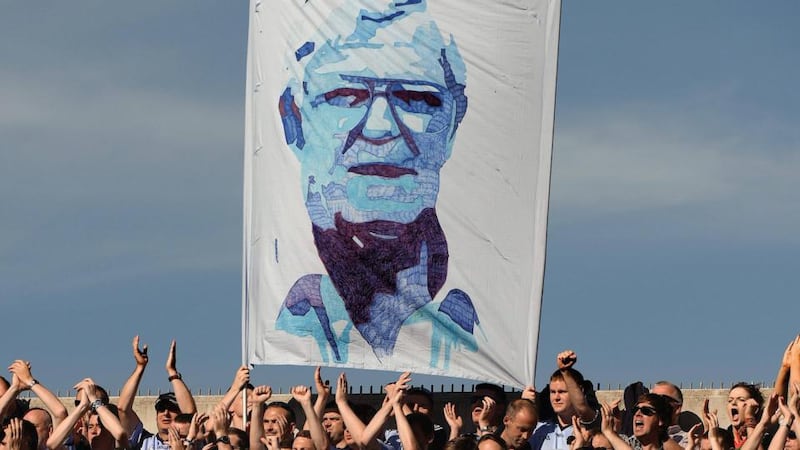
“There were four fundamental points,” Heffernan said in Magill magazine. “The team had won nothing, it had done nothing, morale was at a low ebb and confidence was just not there. We wanted to create in the players a sense that they had an asset which nobody else had. We were going to make them the fittest team in the country.”
Among other things the Dublin players were introduced to circuit training that winter, two nights a week at Coláiste Eoin in Finglas. “Kevin got these steps built to strengthen the thigh muscles and the quads, the whole lot,” says Larkin. “We had tyres for dancing through – things we hadn’t seen before.”
Other stuff might not have come from an academic manual. The players had medicine balls dropped on their stomachs while they lay on the grass with their hands under their buttocks. They stood in pairs, punching each other in the gut. Heffernan devised a punishing running drill he called the circle chase. Players were lined up five yards apart, along the circumference of a circle, under orders to catch the next player in the chain in a flat-out sprint. The successful chasers earned a short breather; the captured players were forced to stay in the circle.
The players hated it. It wasn’t designed for their liking. Heffernan was looking for players who could withstand pain, in all its forms.
“Kevin mentioned in the tin hut [their meeting room in Parnell Park] that if anyone wants to get out, if anyone wants to jump ship, now was their time,” says Cullen, “because it’s going to be tough. ‘What I’m going to throw into you is going to be tough,’ he said, ‘and we have to have tough men.’”
The National Football League had an odd structure that year. Just after Heffernan took charge, in the autumn of 1973, Dublin played Roscommon in a league match that had been a hangover from the previous season. To avoid relegation from Division One – for the first time in their history – Dublin needed to win by eight points; in the event, they lost by five.
They landed in what was called Group A of Division Two, alongside a cohort of teams who normally inhabited the lower reaches of the league: Waterford, Carlow, Limerick, Kilkenny, Clare and Wexford – all of whom were relocated to Division Three for the following season. Dublin football had never been so far off Broadway.
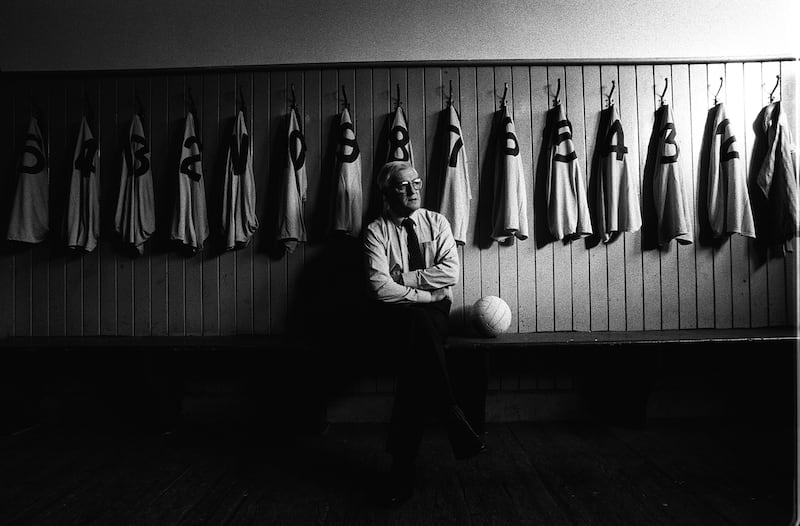
For the Kilkenny match they arrived to find a minor hurling county final in full swing and Nowlan Park thronged. It quickly dawned on Heffernan that their football game wasn’t going to throw-in at the appointed time and this scheduling jam was raised with Kilkenny’s secretary, Paddy Grace. He promptly offered Dublin the two points if they weren’t prepared to wait.
“Very few people can claim they played Kilkenny in the National Football League in Nowlan Park,” says Hanahoe. “I remember, very distinctly, when we arrived there were between five and ten thousand people in Nowlan Park. When we got on to the field there were about a hundred people left.”
In February of that year Clare came to Croke Park and beat Dublin by six points. “The lesson to be learned [for Dublin],” scolded the Irish Independent, “is that there is no substitute for honest endeavour and team spirit.” In the same report, Dublin’s support was described as “a dwindling brigade”.
Three weeks before they played Wexford in the championship Dublin met Kildare in what was described as a play-off, but which was effectively the Division Two league final. Both teams had already secured promotion to Division One. Kildare won by seven points. A crowd of 4,049 turned up to watch. Just like The Dubs, Heffo’s Army didn’t exist.
After Dublin beat Wexford with a couple of late goals, Heffernan stayed in Croke Park to watch Kerry beat Roscommon in the league final. It didn’t improve his mood. “It was men and boys,” said Heffernan. “They were the men, and we were the boys. I felt very down as I got into my car [to] go home that evening.”
Heffernan told the story many times of what happened on that journey home. With him in the car were his wife Mary, her friend Lily Jennings and Lily’s seven-year-old son Terry. Heffernan was venting about Dublin’s performance, lamenting, among other things, their lack of a free taker.
Terry used to go all the St Vincent’s matches with his Dad and from the back of the car he piped up that Jimmy Keaveney never missed a free. Heffernan was a Vincent’s man too and he knew all about Keaveney.
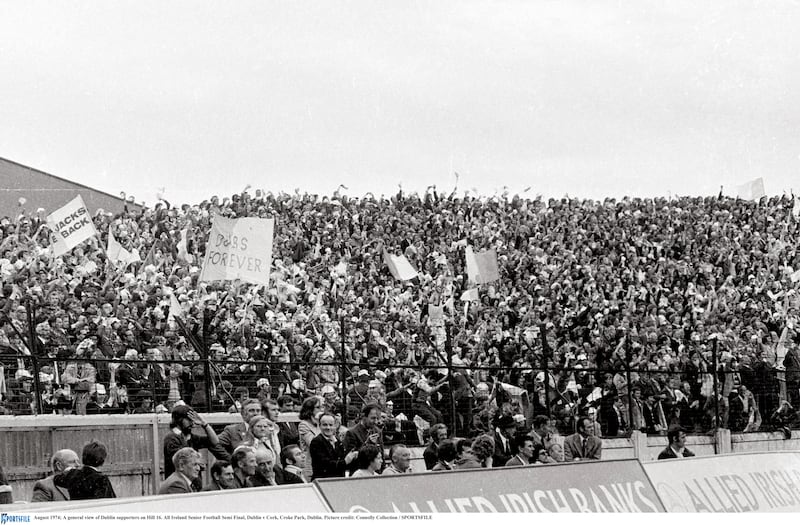
“In my mind Jimmy was out of the squad, overweight and not a contender,” said Heffernan. “That evening I rang him. Would the penny have dropped without the prompting from the seven-year-old Terry? I don’t know, but I do know that it had not dropped in the six months I had been in charge of the team.”
Keaveney’s return to Dublin training the following week sent a tremor through the squad. The rest of them had spilt their guts for the winter, suffering the horrors of Heffernan’s training. Then Keaveney appears, like the first bloom of spring.
“I saw him coming in [to training],” Robbie Kelleher said years later, “and I thought to myself, ‘Holy f**k, typical Dublin. We win one match and they bring back the old guy from Vincent’s.’”
For Dublin to win the 1974 All-Ireland many things would make a difference: the return of Keaveney was one. They beat Louth in the second round. Keaveney kicked six points. He finished the year with 1-36 and the All-Star for full-forward.
Nothing happened quickly, though. On the pitch, the plan was slow to take root. Hanahoe was at the heart of it. In an interview with Seán Moran on these pages 10 years ago, the Wexford centre back Martin Quigley spoke about being bamboozled by Hanahoe’s movement. “I hadn’t a clue where he was,” he said. “I just remember that feeling, ‘Where the hell is he gone?’”
“Martin probably expected me to stand beside him and that was not going to happen,” says Hanahoe. “We had devised a strategy to upset defences and make more space available so that people could get into that space for the purpose of scoring. That was it. Bobby Doyle had another role of a runner and he appeared everywhere rather than sitting in the corner.”
Against Wexford in the first round, the plan was in its caterpillar phase, before it grew wings. “It was not that Dublin lacked method,” reported the Irish Independent. “Rather they seemed inhibited by playing to a plan which, as yet, does not appear to come naturally.”
And still. Did they think they were going anywhere? “If there was a feeling in the early rounds of the ‘74 championship that we were on to something,” said Anton O’Toole years later, “I was certainly not aware of it.”
Dublin won the All-Ireland. That’s another story.
















